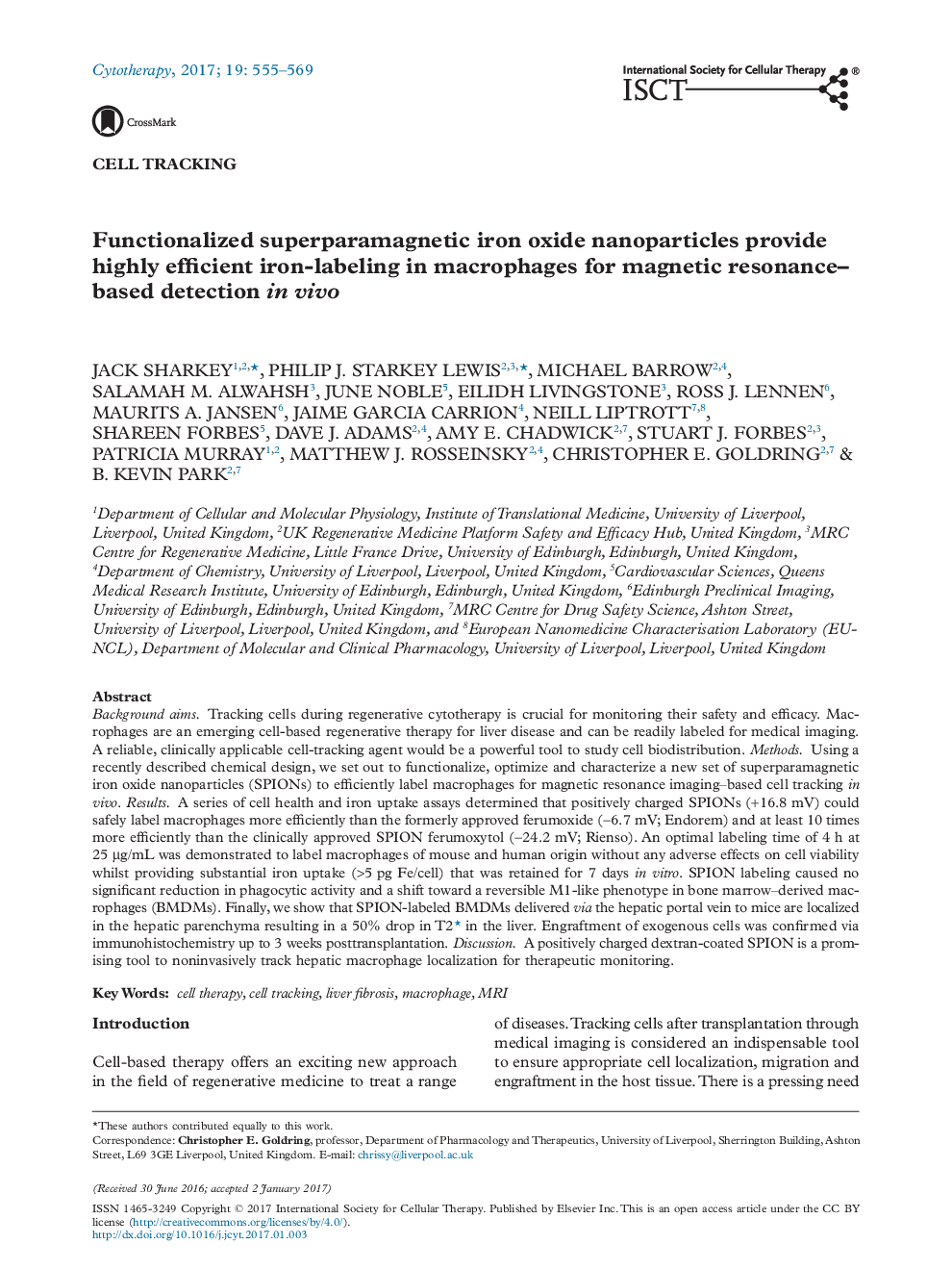| کد مقاله | کد نشریه | سال انتشار | مقاله انگلیسی | نسخه تمام متن |
|---|---|---|---|---|
| 5531446 | 1401797 | 2017 | 15 صفحه PDF | دانلود رایگان |

Background aimsTracking cells during regenerative cytotherapy is crucial for monitoring their safety and efficacy. Macrophages are an emerging cell-based regenerative therapy for liver disease and can be readily labeled for medical imaging. A reliable, clinically applicable cell-tracking agent would be a powerful tool to study cell biodistribution.MethodsUsing a recently described chemical design, we set out to functionalize, optimize and characterize a new set of superparamagnetic iron oxide nanoparticles (SPIONs) to efficiently label macrophages for magnetic resonance imaging-based cell tracking in vivo.ResultsA series of cell health and iron uptake assays determined that positively charged SPIONs (+16.8âmV) could safely label macrophages more efficiently than the formerly approved ferumoxide (â6.7âmV; Endorem) and at least 10 times more efficiently than the clinically approved SPION ferumoxytol (â24.2âmV; Rienso). An optimal labeling time of 4âh at 25âµg/mL was demonstrated to label macrophages of mouse and human origin without any adverse effects on cell viability whilst providing substantial iron uptake (>5âpg Fe/cell) that was retained for 7 days in vitro. SPION labeling caused no significant reduction in phagocytic activity and a shift toward a reversible M1-like phenotype in bone marrow-derived macrophages (BMDMs). Finally, we show that SPION-labeled BMDMs delivered via the hepatic portal vein to mice are localized in the hepatic parenchyma resulting in a 50% drop in T2* in the liver. Engraftment of exogenous cells was confirmed via immunohistochemistry up to 3 weeks posttransplantation.DiscussionA positively charged dextran-coated SPION is a promising tool to noninvasively track hepatic macrophage localization for therapeutic monitoring.
Graphical Abstract86
Journal: Cytotherapy - Volume 19, Issue 4, April 2017, Pages 555-569